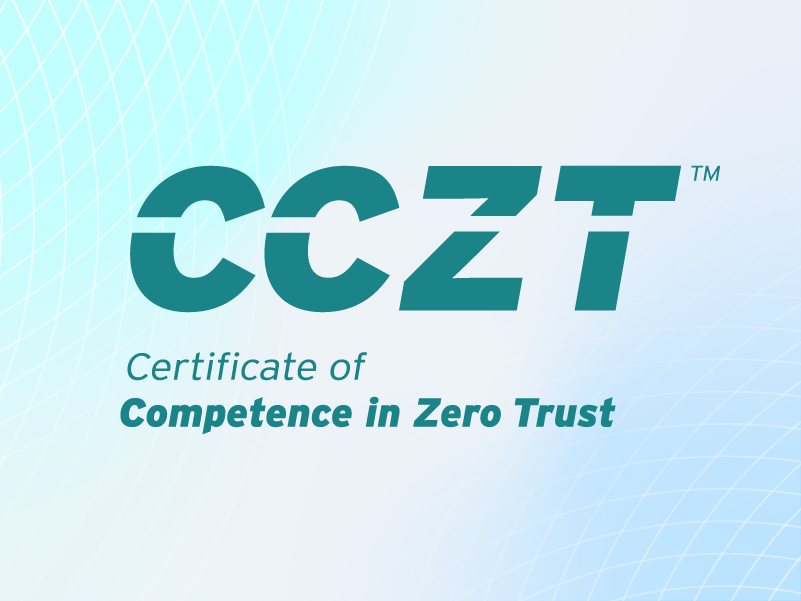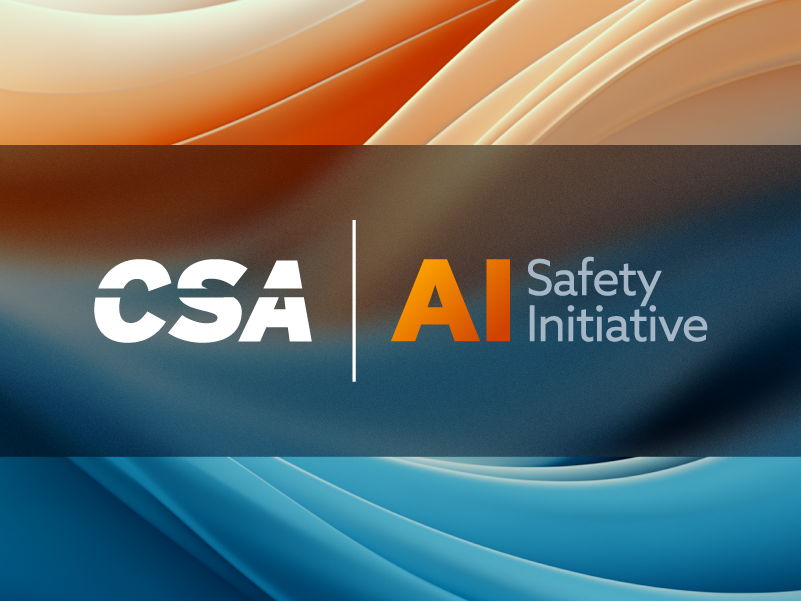From Policy to Prediction: The Role of Explainable AI in Zero Trust Cloud Security
Published 09/10/2025
You trust AI to protect your systems. It spots threats, blocks risks, and makes fast calls. But do you know how it reaches those decisions?
In a Zero Trust model, that question becomes critical. You can’t afford to just trust outcomes. You need to understand how AI gets there. You need transparency in every step it takes. If you can’t see its logic, how can you trust it? And if something goes wrong, how do you trace it back?
That’s where governance steps in. You must make AI decisions easy to follow. You must make them easy to audit. Without that clarity, Zero Trust loses its power. So the real challenge is: how do you make AI in Zero Trust transparent, accountable, and secure?
Introduction
AI provides swift threat detection services. It operates without any breaks, so it can make immediate choices. Most of the time, people cannot observe the decision-making process. The broad range of reasons that lead AI to make its choices creates the "black box" security dilemma. In this dilemma, AI generates output before users receive the processing logic behind the decision. The system denies entry to users as it performs a risk assessment, then shows a warning sign for flagged risks. Users are left with unanswered questions about the reason behind such actions.
All units operating under Zero Trust face concerns because of their unidentified blind spots. Because of this, the lack of self-explanation by AI systems leads to a rapid breakdown of trust relationships and security postures. Your control environment requires strict rules. Auditors demand complete tracking capabilities that include step-by-step reasoning from systems choice in an environment that affects your security position. To achieve this visibility, AI systems must precisely explain the rationale behind decisions, as well as identify exact times and methods applied during operations.
It’s up to you to demonstrate the strict controls that your systems implement. The cloud policy implementation methods that AI follows lie within the scope of this requirement. When auditability is missing, compliance transforms into a matter of pure guesswork.
Why Explainability Matters in Zero Trust
Explainable AI
Every entity in a Zero Trust security model must demonstrate its right to access. All users, along with their devices and applications, need to validate their identity through authorization. AI serves as a key factor to implement this rule enforcement. The system evaluates behavior while identifying potential risks through fast decision-making processes. After access gets blocked, you require an explanation of the cause of the denial. That’s where explainability becomes critical. The translation of artificial intelligence into a trustworthy partner emerges through explainability.
For example, a particular login attempt triggers your AI system to indicate an abnormal behavior. The system detects a device that operates within new geographical boundaries. The system identifies irregular user behavior patterns together with unusual times for accessing the system as a basis to stop access.
The situation becomes more difficult when the user in question is your organization's Chief Financial Officer.
You find yourself in a serious security situation. You need an explanation about the security system’s observations and operational reasons. The detected presence of risk appeared genuine, but there remained the possibility of it being mistaken information.
Without that explanation, you’re stuck. You must either discard AI decisions with no questions or permit possible security risks to occur. Neither choice feels right.
The process of AI logic explanation strengthens trust between users and systems. Through explanation, you gain the ability to check decisions and find mistakes. Your policies should get adjustments from observing actual usage. The demonstration of accountable system capabilities to regulators remains your most important objective.
Explainability enables your teams to work at accelerated speeds. Your analysts obtain access to decision logic which avoids manual log examination and guesswork. Through the display of AI logic, the team responds immediately. Better decisions coupled with fewer errors and enhanced security define the entire system performance.
Zero Trust operates on a model where system entry is granted through performance achievement rather than being automatic. The method for access denial should always remain crystal clear to all users.
What is Explainable AI (XAI)?
Explainable AI (XAI)
A clear explanation from your AI system remains fundamental for Zero Trust implementation. Each decision made by AI needs a clear justification before users or managers receive approval. Explainable AI tools serve as the solution to provide such explanations. Among explainable AI approaches, we can examine three major methods, which include SHAP, LIME, and Counterfactual Explanations.
SHAP: Breaking Down Every Feature’s Role
SHAP stands for SHapley Additive exPlanations. This methodology demonstrates what impact each input produces for a decision system. This system describes both what occurred and the underlying reasons. The process of user activity review through AI ends with denied access. Through SHAP, you get to see exactly which data factors resulted in that particular decision. Maybe its login time appeared unusual to human eyes. Maybe the location changed. Maybe the actions differed from previous behavior patterns.
Each input factor receives a specific score from SHAP. The outcome becomes clear through the identification of the leading factors that triggered it. No guesswork. Just clear, direct insight into AI’s logic. And that’s key in Zero Trust: To understand every rejected request, users need to receive complete explanations. SHAP delivers that, fast.
LIME: Local Explanations for Single Decisions
Explainable AI with LIME Library
The Local Interpretable Model-agnostic Explanations system goes by the acronym LIME. The approach evaluates one decision by itself. The system accepts a particular case object and displays its important attributes, then develops a basic model for that particular case. The system provides explanations regarding the AI's behavior patterns in that specific field of operation.
A restricted user can use this feature to understand the reasons for their blocked access. The functioning of LIME remains limited to individual system decisions on a specific interval. Through LIME, you can demonstrate to users the precise elements that led to refusal during the process. That builds trust.
Counterfactual Explanations: Descriptions of How to Achieve a Different Outcome
Situations occasionally demand information beyond facts. Users require details about which factors would impact the system outcome. Counterfactual explanations provide the necessary solution for these situations. They show that a small adjustment would have resulted in a different shifting decision.
For example, the system blocks the user after detecting risk-related activities. The explanation states that your access could be approved when logins originate from trusted devices. Users find this type of explanation highly beneficial. The explanation demonstrates methods that users can use to prevent similar problems from happening again. Additionally, the system assists security teams by enabling them to modify rules without needing intuition.
Integration with Zero Trust
The implementation of Zero Trust security relies on these particular technologies. Organizations can implement Zero Trust security because it requires complete oversight and direction capabilities. You do not perform user blocking without reason or basis. The decisions you make stem from actual risk evaluation and proof.
When AI blocks access, SHAP exposes the supporting data. Users can receive precise explanations through the LIME tool. Counterfactuals reveal the alternative actions the user had available to them. By working as one system, these tools present a comprehensive understanding of your decision-making processes.
Such explainability enhances the robustness of your Zero Trust security model. With explanation capabilities, you move beyond enforcement of policies to a dual role of policy explanation. Your system creates fewer incorrect alerts while enhancing user confidence. Through these tools, auditors obtain a path that enables them to track analysis movements.
Example: AI Evaluates a User’s Risk
The system identifies a typical event during analysis. A user attempts to log in through a fresh IP address during early morning at 3 a.m. The system marks the entry as being a high-risk point. Access is blocked.
Now what happens? Having explainability tools provides you with complete authority over system operations. The SHAP models reveal login time and IP address as the reasons for the system blocking access. The LIME evaluation shows that the policy was activated because of the observed behavior pattern. The counterfactual explanation indicates that access should be authorized from recognized geographical positions.
At this point, the user gains an understanding of what caused the system to fail. The AI system's basis for its actions becomes visible to both your team and your staff members. That’s full transparency.
Human-in-the-loop Enforcement
Strong policies alone do not define Zero Trust implementation. Making sense along with intelligent decisions forms the essence of Zero Trust. AI systems enable quick decision-making for you regarding security decisions. At the same time, human decision-making is needed to keep a proper understanding of situations. Human involvement during enforcement decisions holds.
Why Humans Still Matter
Your AI catches anomalies quickly. The system identifies dangerous login activities and abnormal data movement to users. However, the system frequently displays incomplete data views. Maybe the user is traveling. Your organization must make the last decision on all security matters.
With human-in-the-loop systems, AI recommends. A human being performs approval tasks after system recommendations and takes charge of review and override functions. Your system obtains maximum efficiency through a combination of human intelligence and artificial intelligence. You avoid false positives. The business operations remain unimpeded while security measures are enforced.
Governance Implications: From Policy to Practice
Now let’s talk governance. The mere existence of regulations does not provide sufficient security protection in controlled environments. Your approach must demonstrate how decisions match the established policies.
Your established policies should strictly govern AI operations as the AI executes its functions. All access decisions should require their origin to be linked to an established rule. Every access exception should contain detailed logging along with proper justification.
The implementation of these measures benefits more than just internal tranquility. The system also serves three auditing purposes: compliance needs, inspections, and reporting obligations.
Use in Audits and Incident Response
Auditors will not accept unclear answers when performing their assessments. This is why decision logs are a requirement demanded by regulatory authorities. Stakeholders can then demand review when decisions were made, together with the supporting rationale and all final results.
Did the AI block access? You need to show why. The combination of Explainable AI tools with human reviewer functions enables you to generate the required evidence.
Incident response also benefits. Time plays a critical role when any issue appears. You wish to avoid wasting time searching through hard-to-understand logs. Users need to view the exact visual perspective that the AI system processed. The system's operational details, along with its reasoning factors, matter to you. The system delivers faster reaction times combined with smarter operations, which provides more defensible outcomes.
Reporting to Leadership and the Board
The board requires a transparent view that avoids complex systems and will not accept claims that the AI system bears full responsibility for its actions. The board members need to see formalized reports that allow them to comprehend patterns and decision-making processes, and the evaluation of risks.
Through Explainable AI, organizations gain the ability to establish clean dashboard systems that generate trustworthy data outputs. Through your presentations, you display both the decision-making logic and human verification processes. Your Zero Trust strategy gains total organizational trust because of your explainable reporting process.
Using this approach turns technological victories into leadership confidence through your actions.
Documentation, Policy Alignment, and Feedback Loops
You can’t improve what you can’t track. That’s why documentation matters at every stage. Each AI decision needs a record. Each human override needs a note. And each policy needs a clear link to outcomes.
This turns your enforcement into a learning system. You spot gaps in policy. You adjust for real-world behavior. You tune models with better data. And most importantly, you close the loop.
Feedback loops make your AI smarter over time. You show your AI what it got right and you show where it missed the mark. That turns mistakes into improvements, fast.
Best Practices for AI-Driven Zero Trust
Let’s get practical. Here’s how you build trust into AI enforcement.
- Build XAI Pipelines Into Your Tools: XAI systems should be implemented in all areas from the beginning. Don’t bolt it on later. Associate SHAP with LIME together with counterfactuals directly within your Zero Trust tools. Make every decision traceable. Make every action reviewable. The explanations should remain straightforward so that team members can understand them.
- Run Regular Audits and Model Checks: Your AI system should not operate without human supervision. Audit it often. Check its outputs. Compare them with human decisions. Make sure it’s following policy. If it drifts, retrain it. Your organization should react to potential mistakes before public disclosure. Also, simulate real-world scenarios. Create edge cases. Test how AI reacts. Observe the reactions of your system that includes human operators in the loop. The examination results will help you strengthen enforcement and lower your organization's risk.
- Align Tech with Policy and Culture: The pace of AI development should not exceed your governance structure. Your teams, along with your policies and your tools, should develop at a unified pace. Write clear guidelines. Train your people. Your security culture must integrate AI as a functional component instead of allowing it to remain an opaque system.
Conclusion
You can’t afford to guess in security, especially not in a Zero Trust world. Every decision your AI makes must be clear. It can’t just say no, it must say why. Without that, trust breaks, and once trust breaks, your whole model weakens. You lose visibility. You lose control. And regulated environments, that’s a recipe for trouble. Auditors won’t accept black-box decisions. Neither will your leadership users.
Explainable AI (XAI) is the path forward. It gives your team clarity. It helps you stay compliant. It strengthens your policy enforcement and keeps your security posture sharp. When you build transparency into your AI tools, everything improves. Users get fairer decisions. Analysts get faster answers. Boards get cleaner reports.
So don’t just deploy AI, go deeper. Make it transparent. Make it auditable. Make it human-aware. That’s how you build cloud security that people can trust.
Related Resources



Unlock Cloud Security Insights
Subscribe to our newsletter for the latest expert trends and updates
Related Articles:
AAGATE: A NIST AI RMF-Aligned Governance Platform for Agentic AI
Published: 12/22/2025
Is Cloud-Native Key Management Right for You?
Published: 12/19/2025
Agentic AI Security: New Dynamics, Trusted Foundations
Published: 12/18/2025


.png)
.jpeg)
.jpeg)
.jpeg)
.jpeg)